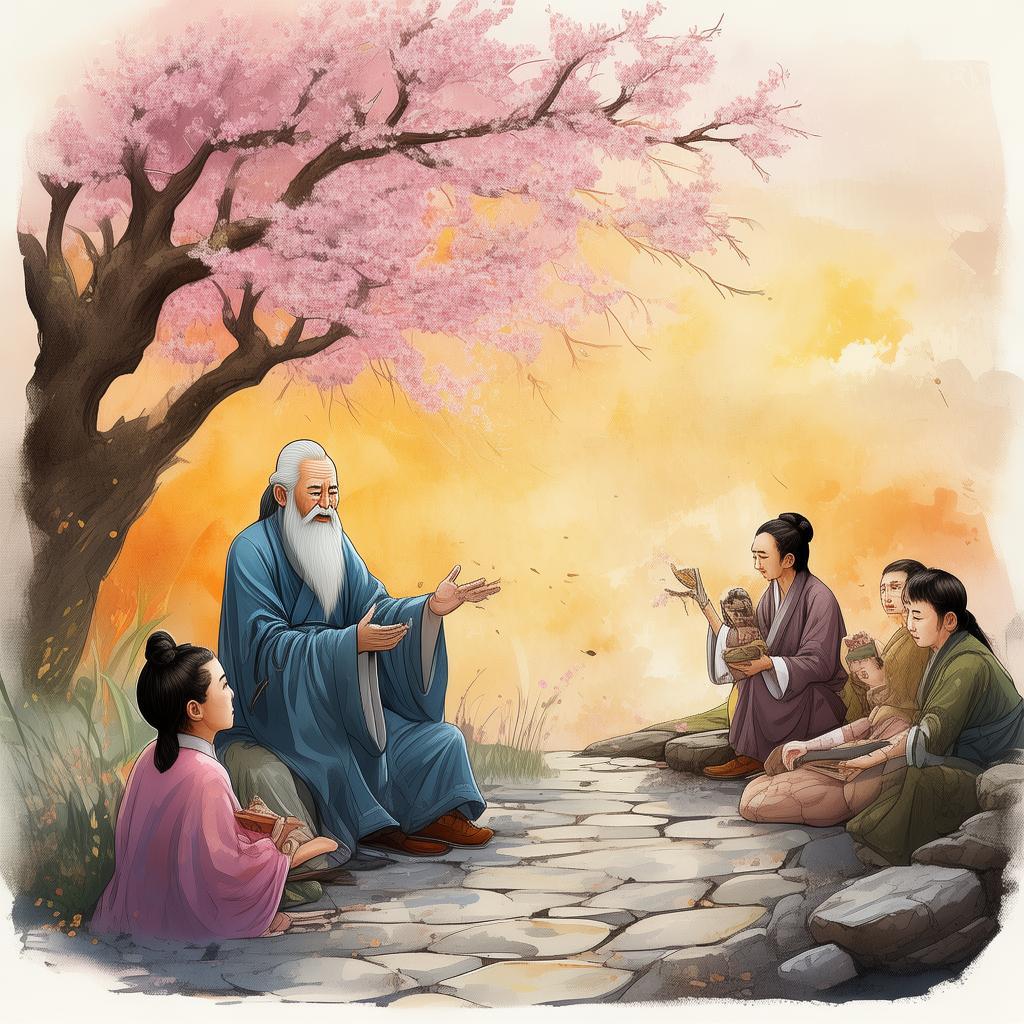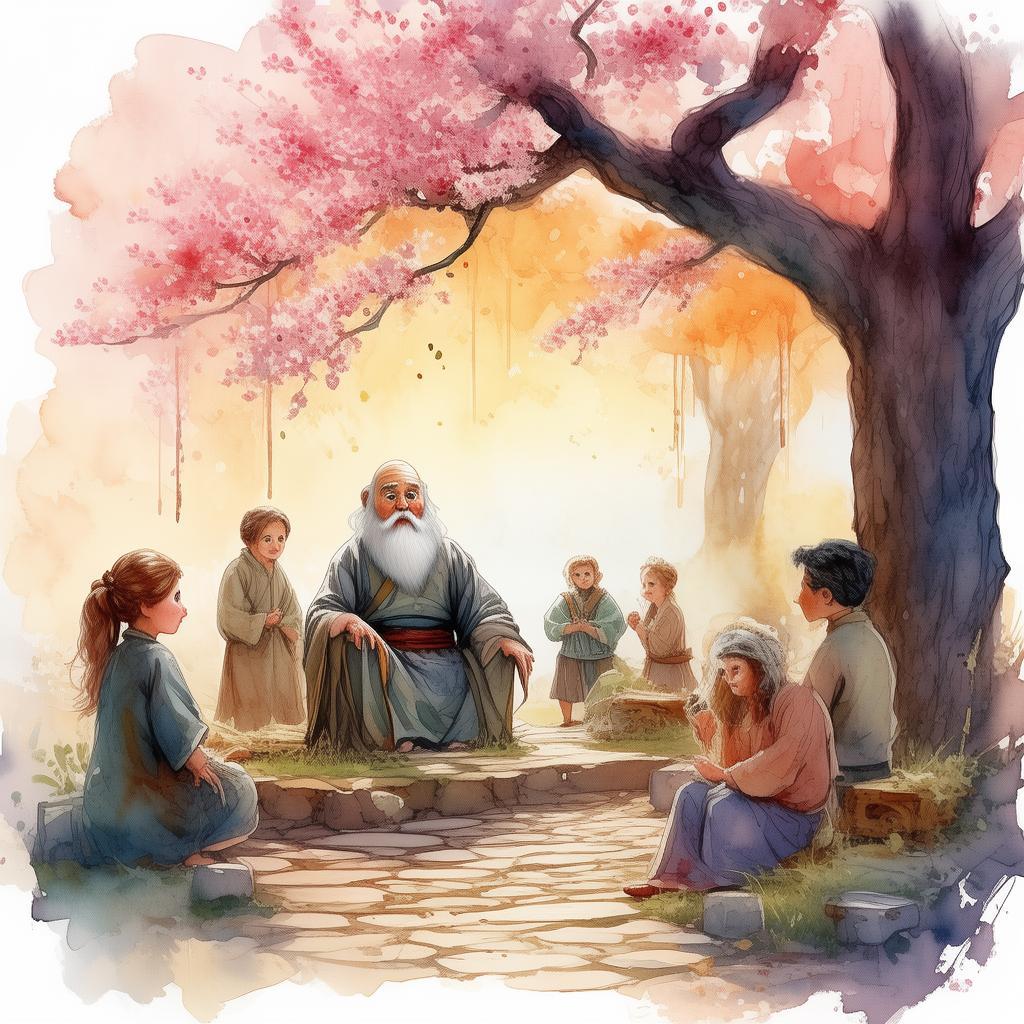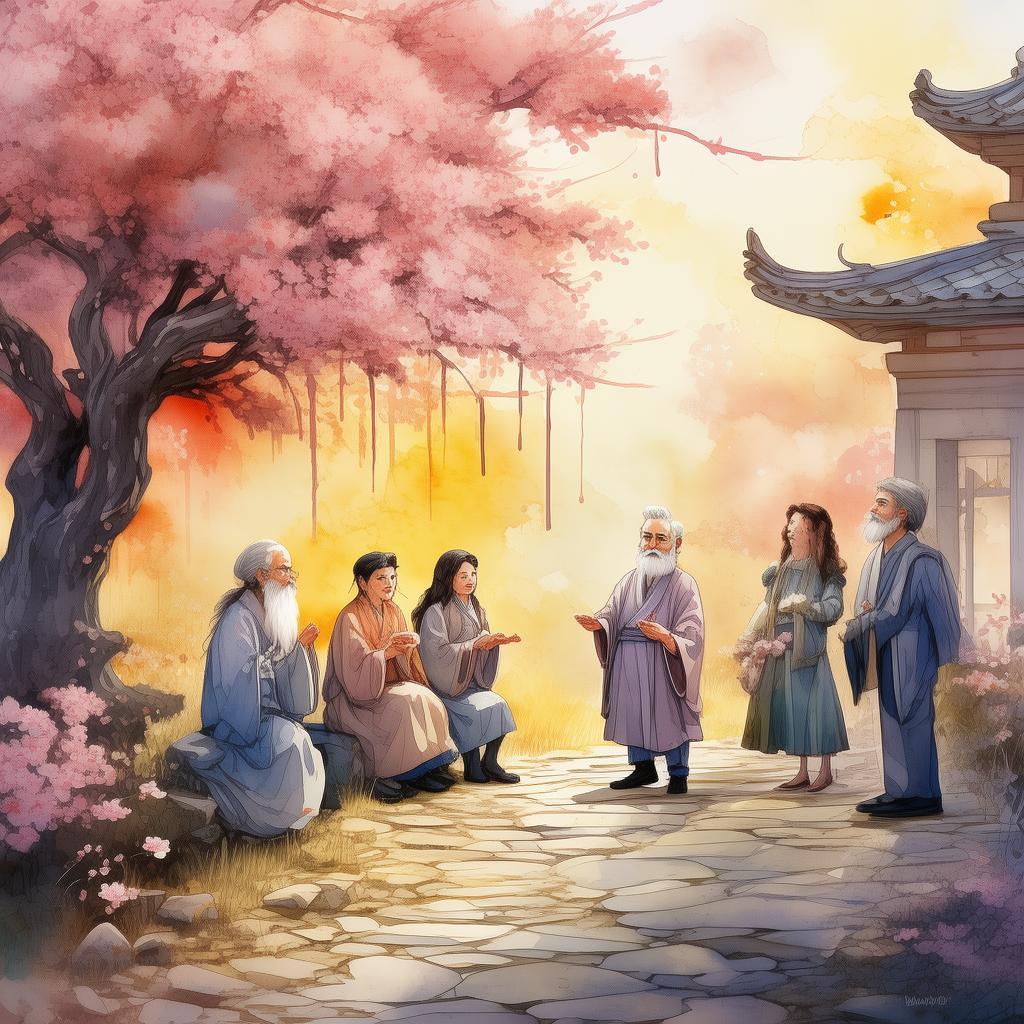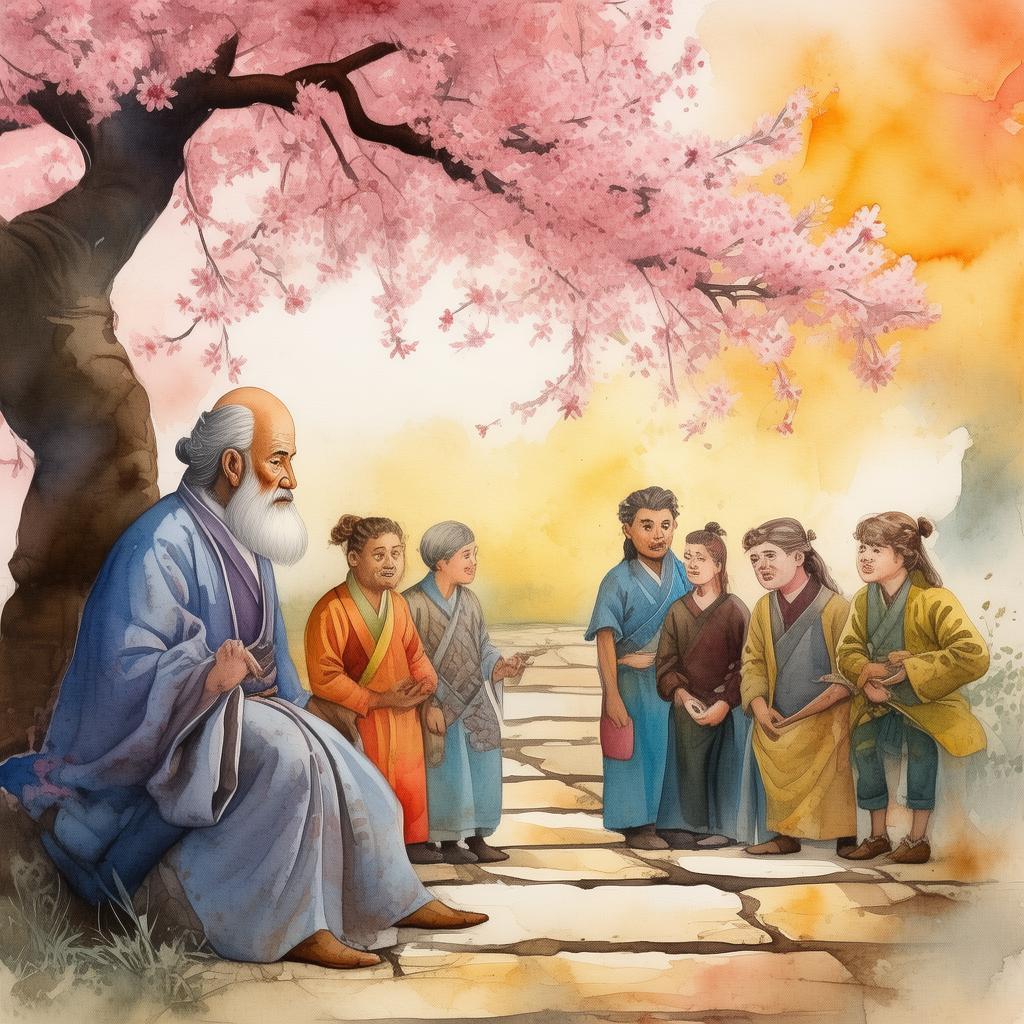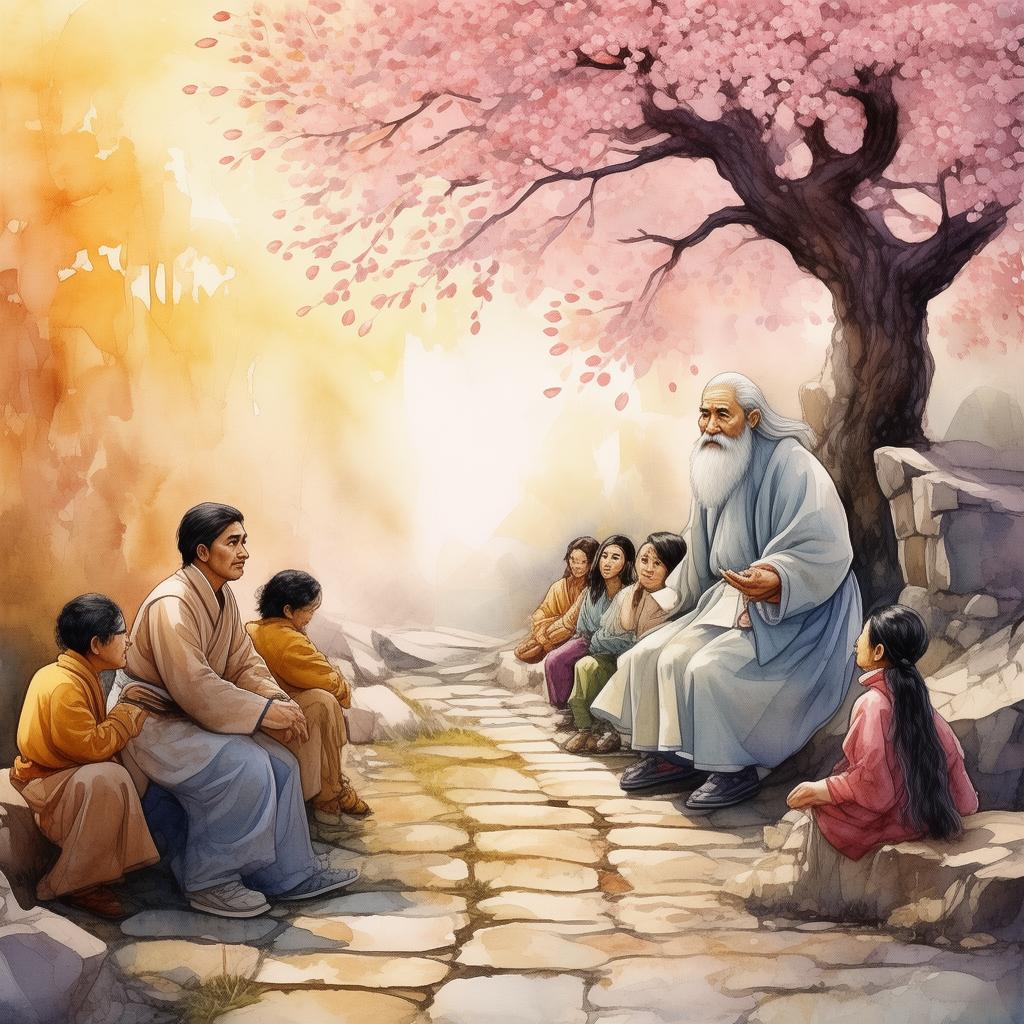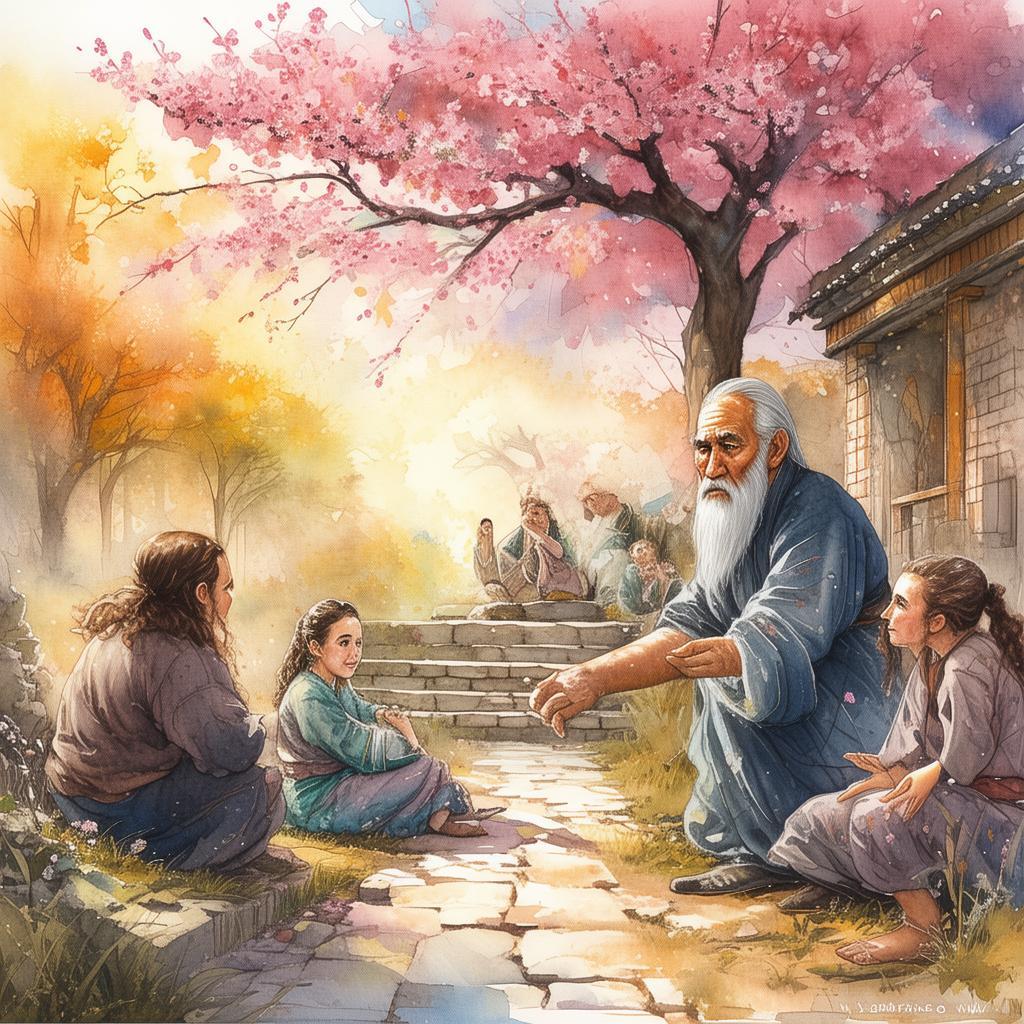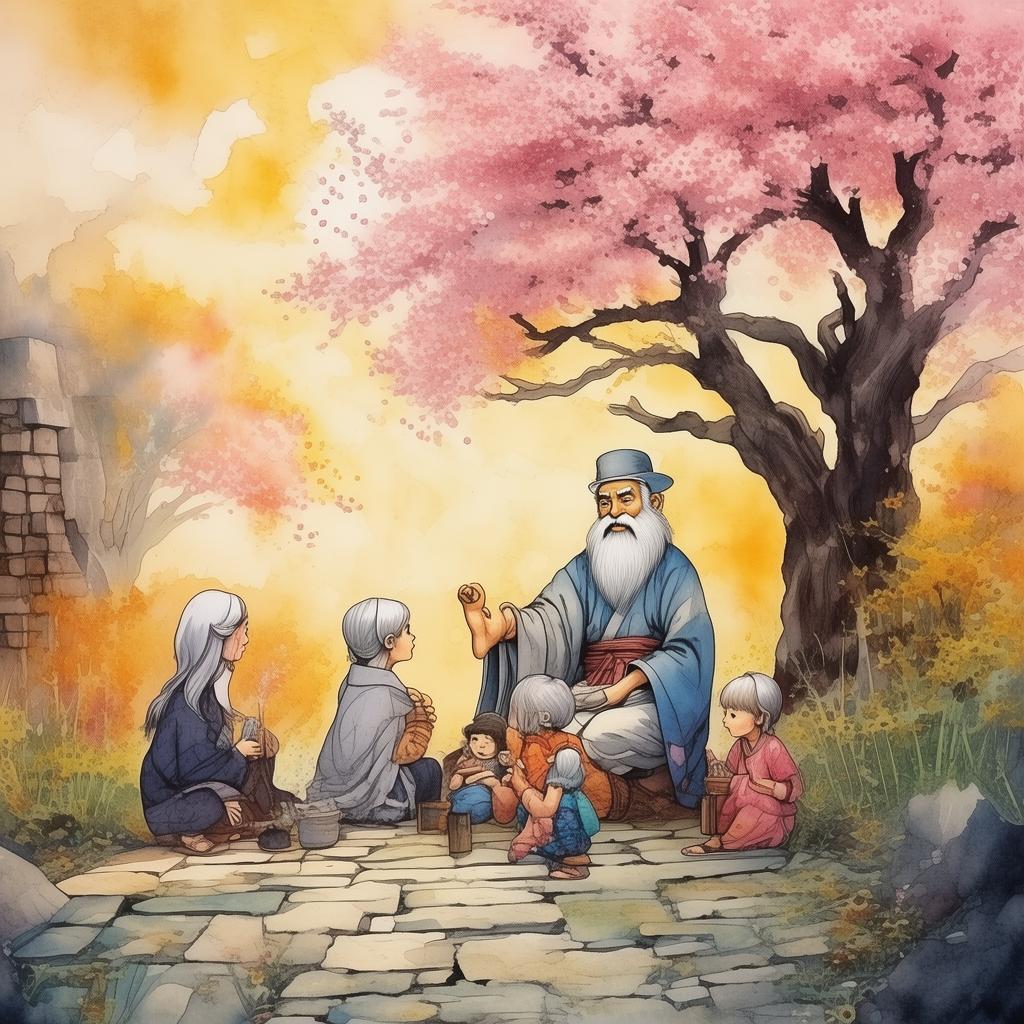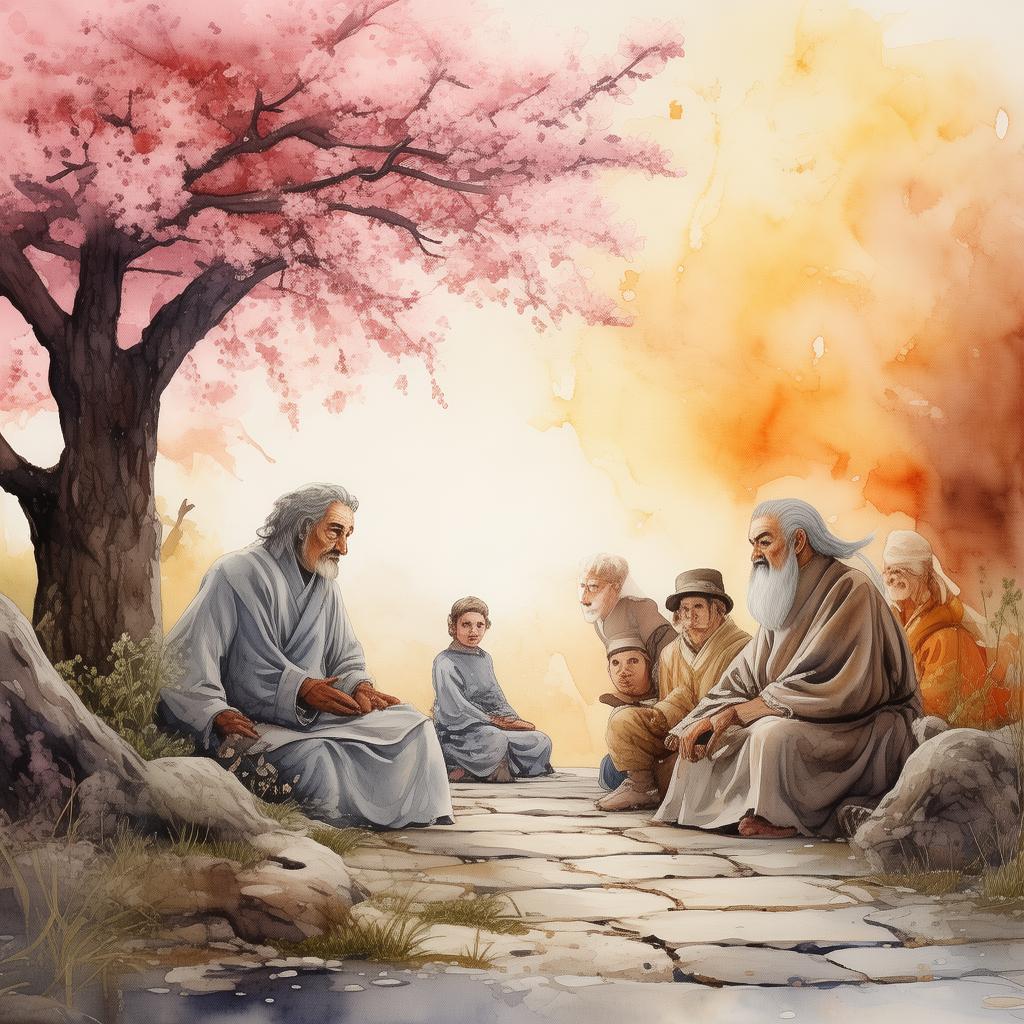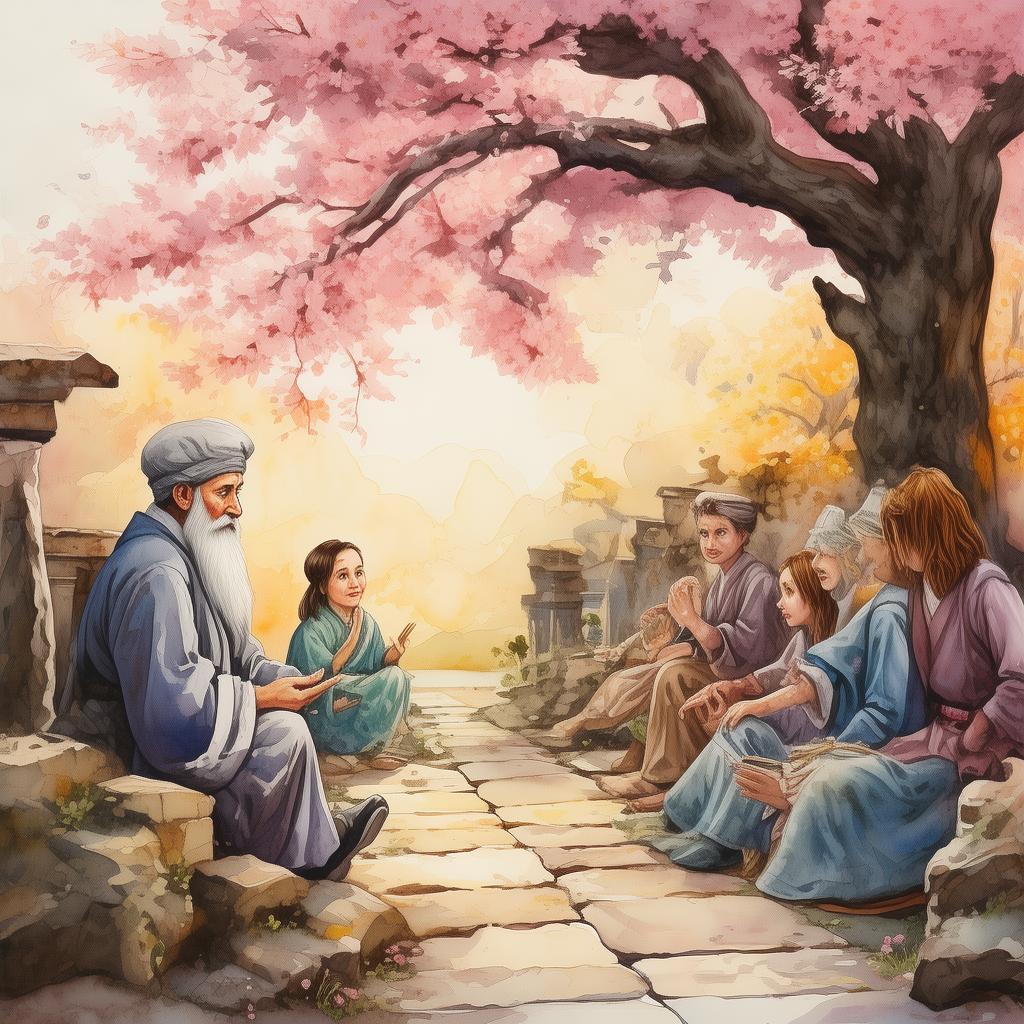Zenith of Zen: The Master's Paradox
In the tranquil town of Luminara, nestled among the rolling hills and whispering forests, there stood an ancient temple known as the Zenith of Zen. It was a place of profound wisdom and artistic expression, where the greatest minds in the land gathered to seek enlightenment. Among these minds was a young painter named Li, whose brush was as free as the wind that danced through the temple gardens.
Li was known for his ability to capture the essence of nature in his works, each stroke of his brush a silent conversation with the world. His paintings were imbued with a spirit that seemed to breathe life into the canvas, a testament to his deep connection with the Zen philosophy that guided his every action.
One day, as Li was lost in contemplation of a particularly challenging painting, he stumbled upon a hidden chamber within the temple. The chamber was adorned with ancient murals depicting the journey of enlightenment, each one more intricate and profound than the last. At the center of the room stood a pedestal, upon which rested a single, mysterious object—a small, intricately carved box.
Intrigued, Li reached out and touched the box. The surface was cool to the touch, but it seemed to pulse with an unseen energy. As his fingers brushed against the carvings, a faint whisper filled the air, "Open me, and you shall uncover the zenith of Zen."
With a mix of curiosity and trepidation, Li lifted the lid of the box. Inside, he found a single, delicate scroll. Unrolling it, he discovered a series of riddles, each one a step closer to understanding the Zen paradox that had eluded him for so long.
The first riddle read: "I am not a river, yet I flow. I am not a tree, yet I grow. What am I?"
Li pondered the question, his mind racing with possibilities. Hours passed as he struggled to solve the riddle, but to no avail. The second riddle followed, even more perplexing than the first: "I am not a light, yet I illuminate. I am not a sound, yet I resonate. What am I?"
Li's frustration grew, but he refused to give up. He sought the wisdom of the temple's elder, Master Hu, who had lived a life of enlightenment and artistic pursuit. Master Hu listened intently as Li described the riddles, then smiled gently.
"Art and enlightenment are one," Master Hu said. "The paradox you seek is the balance between form and emptiness. In your paintings, you must find the harmony between the visible and the invisible, the tangible and the intangible."
Li returned to the chamber, his mind ablaze with inspiration. He began to paint, each stroke a journey into the heart of the paradox. His brush danced across the canvas, creating a landscape that was both real and ethereal, a world where the boundaries between the tangible and the intangible blurred.
As he worked, the riddles began to unravel. The first riddle, "I am not a river, yet I flow," was a metaphor for the artist's journey, ever-changing yet continuous. The second riddle, "I am not a tree, yet I grow," spoke to the ever-evolving nature of art and enlightenment, rooted in tradition yet reaching towards the unknown.
The final riddle, "I am not a light, yet I illuminate," was the most profound of all. It was a reminder that enlightenment and art are not about creating something new, but about revealing the light that has always been there, hidden in plain sight.
With each new painting, Li's understanding of the Zen paradox deepened. He realized that the key to unlocking the zenith of Zen was not in the pursuit of perfection, but in the acceptance of the imperfections that define the human experience.
The temple's annual art festival approached, and Li's paintings were the centerpiece of the event. Crowds gathered to marvel at the masterpieces that seemed to breathe with life, each one a testament to Li's journey into the heart of the Zen paradox.
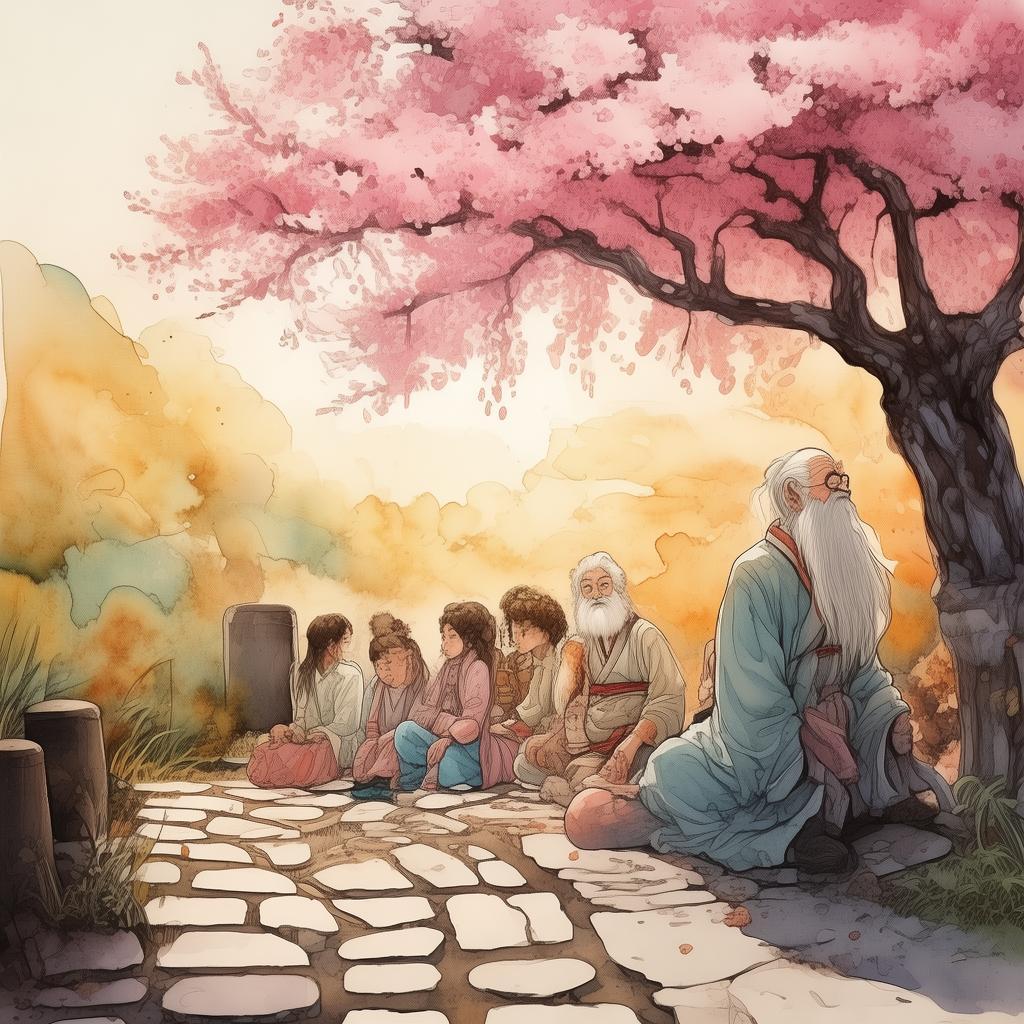
Master Hu stood before the crowd, his eyes twinkling with pride. "This is the zenith of Zen," he declared. "It is not a destination, but a journey. It is not about finding answers, but about asking the right questions."
Li's paintings became the talk of the town, a beacon of enlightenment that inspired people to look beyond the surface of their own lives. In the end, Li's journey was not just about art, but about finding the balance between the tangible and the intangible, the known and the unknown.
The Zenith of Zen: The Master's Paradox was not just a story of art and enlightenment; it was a story of life itself, a reminder that the most profound truths are often hidden in the most ordinary moments.
✨ Original Statement ✨
All articles published on this website (including but not limited to text, images, videos, and other content) are original or authorized for reposting and are protected by relevant laws. Without the explicit written permission of this website, no individual or organization may copy, modify, repost, or use the content for commercial purposes.
If you need to quote or cooperate, please contact this site for authorization. We reserve the right to pursue legal responsibility for any unauthorized use.
Hereby declared.
